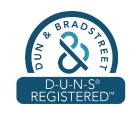Key highlights
- Identifying transferable skills allows you to uncover the strengths and talents you can apply to roles on a new career path
- As organizations continue to face skills shortages and retention struggles, it’s important to uncover and develop these potentially hidden skills in yourself and others.
- Linkedin Learning has listed some courses that will help you develop transferable skills useful for both employees and Talent leaders. The courses are free until July 15, 2023.
It has always been a challenge for both individuals and talent leaders to identify transferable skills, which are the skills and competencies you can apply to roles on a new career path.
Finding and developing these possibly hidden skills in both yourself and others is more crucial than ever as organizations continue to struggle with retention issues and skills shortages.
Providing learning opportunities is the main strategy used by employers to increase employee retention, according to LinkedIn’s 2023 Workplace Learning Report which found that 93% of businesses are concerned about employee turnover. Employees rank “progress toward career goals” as their #1 motivation to learn, therefore it’s the proper choice.
HR leaders can increase employee engagement by linking skill-building to internal mobility opportunities and career progression, as well as increasing the pool of future-ready talents in your workforce.
These four courses will help individuals build transferable skills and enable HR leaders to offer ongoing upskilling and reskilling opportunities for employees.
The courses ultimately are useful for those seeking their next career move or those assisting their organization to navigate a difficult talent market.
The courses are free till July 15, 2023.
- Leveraging Transferable Skills to Drive Your Career with Jodi Glickman
Jodi Glickman, CEO and founder of corporate training firm Great On The Job, shares real-world examples from her own life as well as the experiences of others, such as how an architect became a brand marketer. This will help job seekers become more marketable and competitive for career paths that may have previously seemed out of reach.
According to her, “Don’t talk yourself out of applying for a job opportunity because you don’t meet the minimum requirements or have relevant experience; instead, figure out what transferable skills you do have to land the job you want.”
According to her, everyone has transferable skills, but most people tend to undervalue or fail to even notice them. When applying for a new job or thinking about a change within your organization, she demonstrates how to focus on your strengths and talents, then match them to job openings, and confidently pitch your transferrable skills.
If you’re unsure about your transferable talents, consider the following: What do other people (your friends, family, peers, and coworkers) turn to you for help, advice, and comments on? This information reveals what people value in you and identifies your abilities, which you can turn into in-demand skills and ultimately new employment prospects.
- Upskilling and Reskilling Your Workforce with Lori Niles-Hofmann
According to LinkedIn data, job-related skill sets have changed by almost 25% since 2015 and will double by 2027. Organizations are therefore looking to HR professionals to assist employees to stay agile so they can address today’s issues and be better equipped for the future of work as skills become the key currency for employment.
With this course, Lori Niles-Hofmann, senior educational technology transformation strategist at NilesNolen, shows how that can be achieved.
In a workplace where transferrable skills are becoming more and more important, Lori, who is enthusiastic about assisting businesses in thriving in the face of change, shows how to successfully upskill and reskill employees by transitioning them from a business support role to a strategic business driver.
The course will teach you how to launch a thorough skilling program and determine your upskilling investment using her data-based techniques and frameworks.
As an employee, you want to develop transferable skills so that you can take advantage of new career opportunities. Talent leaders, on the other hand, need to recognize others’ transferable skills, even if they haven’t noticed them yet.
Don Phin, a leadership trainer, teaches how to use transferable skills as both an employee and an employer in this course.
The course will teach you how to identify, assess, and improve transferable skills for yourself, your team, and potential employees. When you fully recognize the value of transferable hard and soft skills, you will have an organization where employees want to stay.
- Recruiting Techniques to Reveal Transferable Skills with Barbara Bruno
Focusing on transferable skills can increase your candidate pool and give you a competitive advantage. Barbara Bruno, CEO of Good as Gold Training and president of H & R Search, teaches this skills-based hiring course in which she explains how to look beyond a candidate’s previous titles or professional experience to identify skills that will transfer to roles you need to fill.
Talent leaders and CEOs will learn how to better understand, identify, and hire candidates with transferable skills so they can thrive and succeed in their roles. This includes simple changes that can be made right away, such as adopting new interview techniques, revising job descriptions, and gaining hiring managers’ support.




















